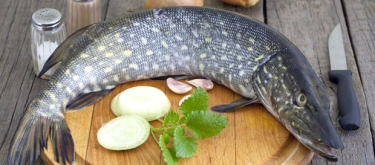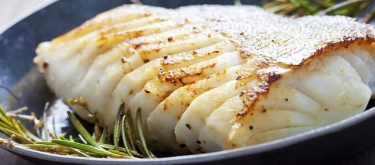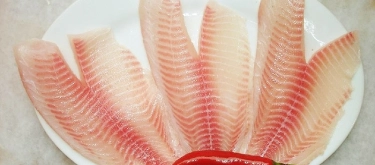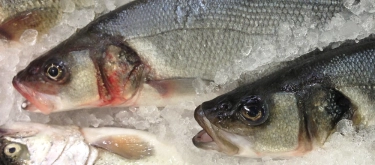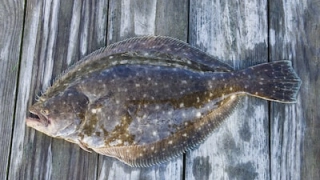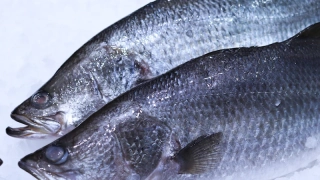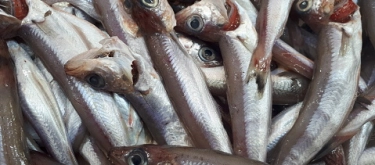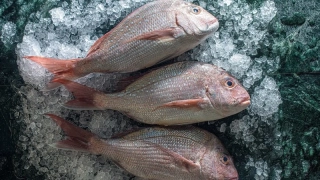Crucian Carp: Taste Profile, Aroma, Benefits and Health Risks
Crucian carp (Carassius carassius) is a freshwater fish widely enjoyed throughout Europe, Russia, and Asia. Celebrated for its rich flavor and culinary versatility, crucian carp is especially beloved in traditional regional cuisines. Commonly fried, baked, or stewed, it also plays an essential role in classic dishes such as fish soups, hearty stews, and delicately pan-fried fillets. Despite its numerous bones, its distinctive taste and nutritional benefits make it a favorite among fish enthusiasts.
Crucian carp is a freshwater fish product unsuitable for vegetarians, vegans, or individuals allergic to fish and seafood. Naturally gluten-free, it should nonetheless be carefully prepared to avoid cross-contamination from sauces, batters, or seasoning blends containing gluten. Crucian carp has numerous small bones, requiring careful eating or preparation techniques to remove them effectively.
What does Crucian Carp taste like?
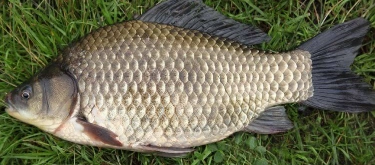
Complete Sensory Description
Taste
Crucian carp offers a moderately rich, subtly sweet, and distinctively earthy flavor. Unlike many freshwater fish, its taste carries minimal "muddy" or overly pronounced fishiness when freshly caught from clean waters. Its sweetness is delicate and balanced by gentle mineral notes reflective of its freshwater habitat. A slight nuttiness and pleasant vegetal undertones, reminiscent of freshwater algae and aquatic plants, are often noticeable, particularly in fish sourced from natural ponds or slow-moving rivers.
Aroma
Fresh crucian carp possesses a mild and clean freshwater aroma, slightly earthy and vegetative without strong fishiness or pungency. When cooked, especially pan-fried or baked, it emits a pleasant, warm fragrance characterized by caramelized skin, subtle buttery notes, and faintly nutty undertones.
Texture
The texture of crucian carp is tender yet firm, featuring moderately dense flesh composed of small, delicate fibers. Properly cooked carp meat easily flakes apart, offering a moist, succulent mouthfeel. However, crucian carp is known for numerous fine bones embedded throughout the flesh, necessitating careful preparation. When expertly cooked (often through thorough frying or long simmering), these bones can become soft enough to consume comfortably.
Appearance
Fresh crucian carp typically features silvery-gold or bronze-colored scales, shimmering with subtle metallic hues. The flesh beneath is typically pale ivory or off-white, becoming white and opaque upon cooking. After frying or roasting, the fish skin acquires an attractive golden-brown color, providing visual appeal alongside the tender, white flesh inside.
In-depth Flavor Analysis
Crucian carp is distinguished by its subtle complexity. Initially, its taste unfolds with gentle sweetness, closely followed by nuanced earthiness reflecting its freshwater origins. Underlying mineral notes, resembling the gentle, fresh taste of spring water, provide balance without overwhelming the palate. Upon careful tasting, delicate vegetal notes reminiscent of aquatic vegetation or algae may emerge, enhancing its natural freshness and authenticity.
Cooking intensifies certain characteristics; frying amplifies nuttiness and subtle sweetness, complemented by caramelized exterior notes. Stewing or simmering brings forth deeper savory qualities, softening vegetal undertones and enhancing the overall harmony of flavor.
The presence of numerous bones influences its flavor perception as careful eating encourages slower, deliberate tasting, allowing full appreciation of its nuanced, mild sweetness and complexity. This quality is why crucian carp is cherished in regions where patient dining and meticulous culinary traditions are valued.
Varieties and Culinary Uses
-
Whole Fried Carp:
A classic method in Eastern European and Asian cuisines, served crisp with lemon, garlic, herbs, or sauces. -
Fish Soup and Broths:
Commonly featured in traditional soups (e.g., Russian "ukha"), where slow cooking helps soften bones and enriches flavor. -
Baked and Roasted Carp:
Often seasoned with garlic, dill, parsley, lemon, or butter, creating aromatic dishes with crisp skin and tender interiors. -
Stewed and Braised Carp:
Popular in sauces or stews, paired with vegetables, spices, and aromatic herbs, creating comforting and hearty meals.
Culinary Applications
-
Pan-Fried Crucian Carp:
Traditionally fried whole or in fillets until crispy and golden, seasoned simply with salt, pepper, garlic, and herbs, providing a richly satisfying texture and flavor. -
Fish Soups ("Ukha"):
Common in Eastern European cuisines; slow-simmering carp results in deeply flavored broths, softening bones to enhance nutritional value. -
Stews and Braises:
Combined with potatoes, onions, carrots, tomatoes, herbs, and aromatic spices, slow cooking helps the carp achieve tender, flavorful results. -
Baked and Oven-Roasted Carp:
Seasoned generously with lemon juice, dill, parsley, butter, or garlic, baked until crisp-skinned and tender-fleshed, ideal for family-style meals.
Selection and Storage
Selecting Quality Crucian Carp:
- Fresh carp should have bright, clear eyes, moist scales, firm flesh, and a mild, freshwater aroma.
- Avoid specimens with dull eyes, discolored or damaged skin, slimy texture, or strong off-putting smells.
Storage Recommendations:
- Refrigerate fresh crucian carp immediately at temperatures below 4°C (39°F), consuming ideally within 1–2 days.
- Freeze carp quickly after purchase, tightly sealed in airtight packaging, and consume frozen within 2–3 months for best quality.
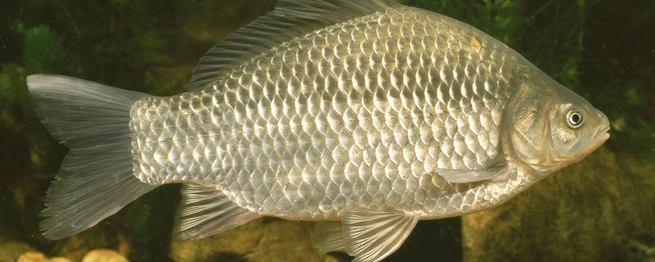
Nutritional Insights
-
Rich Protein Source:
High-quality protein beneficial for muscle repair, growth, and overall bodily functions. -
Omega-3 Fatty Acids:
Provides moderate omega-3 fatty acid content, promoting cardiovascular health, anti-inflammatory properties, and cognitive benefits. -
Vitamins & Minerals:
Crucian carp is rich in B vitamins (B12, B6, niacin), phosphorus, selenium, potassium, and magnesium, essential for immune support, metabolism, and bone health. -
Low Caloric Density:
Generally low-calorie fish, ideal for healthy, balanced diets and nutritious eating patterns.
Expert Insights & Culinary Tips
-
Managing Bones:
Experts recommend deep frying, pressure-cooking, or prolonged simmering methods to soften fine bones, significantly improving culinary enjoyment and convenience. -
Flavor Pairings:
Crucian carp harmonizes beautifully with simple ingredients like dill, parsley, garlic, lemon, butter, white wine, potatoes, and fresh vegetables, enhancing natural flavors and creating comforting dishes. -
Preparation Recommendations:
Marinate briefly with citrus juices, herbs, or spices to enhance flavor, maintain tenderness, and mitigate freshwater earthiness.
Interesting and Curious Facts
- Crucian carp is deeply embedded in traditional cuisines across Eastern Europe and Asia, often associated with home-cooked meals, festive dinners, and regional culinary traditions.
- In Eastern Europe, carp dishes frequently symbolize prosperity, abundance, and good luck, particularly during festive occasions and holidays.
- Despite its challenging bone structure, crucian carp remains a beloved culinary ingredient due to its excellent flavor, nutritional benefits, and traditional cultural significance.
How to Enjoy Crucian Carp
- Pan-fry whole carp with garlic, dill, lemon, and butter, serving crisp with potatoes or salads.
- Prepare traditional fish soup ("Ukha"), slow-simmered with vegetables, herbs, and spices, softening bones, creating richly nutritious, flavorful broth.
- Bake carp fillets seasoned generously with aromatic herbs, lemon slices, or vegetables for a hearty, nutritious meal.
- Enjoy carp stewed or braised, combined with vegetables, aromatic spices, and herbs, delivering comforting dishes perfect for family-style dining.
Harm and Dietary Considerations
-
Bone Structure:
Numerous fine bones present choking hazards, requiring careful preparation and mindful consumption. -
Potential Pollutants:
Carp from polluted freshwater environments may accumulate contaminants, requiring sourcing from reputable, clean waters. -
Allergic Reactions:
Individuals allergic to fish should strictly avoid crucian carp consumption to prevent allergic reactions.
Final Thoughts & Sensory Journey
Crucian carp, cherished for its subtle sweetness, complex earthiness, and culinary versatility, remains a beloved freshwater fish. Although preparation requires patience and skill due to its bones, its richly rewarding flavor, nutritional value, and cultural significance ensure enduring popularity. Prepared traditionally or innovatively, crucian carp continues to offer delightful, wholesome culinary experiences, celebrating tradition, taste, and nutrition.
Resources
- McGee, H. (2004). On Food and Cooking: The Science and Lore of the Kitchen. Scribner.
- Food and Agriculture Organization (FAO). (2021). Freshwater Fish in Global Nutrition and Cuisine.
- USDA FoodData Central (2023). Freshwater Fish Nutritional Composition and Safety Guidelines.
